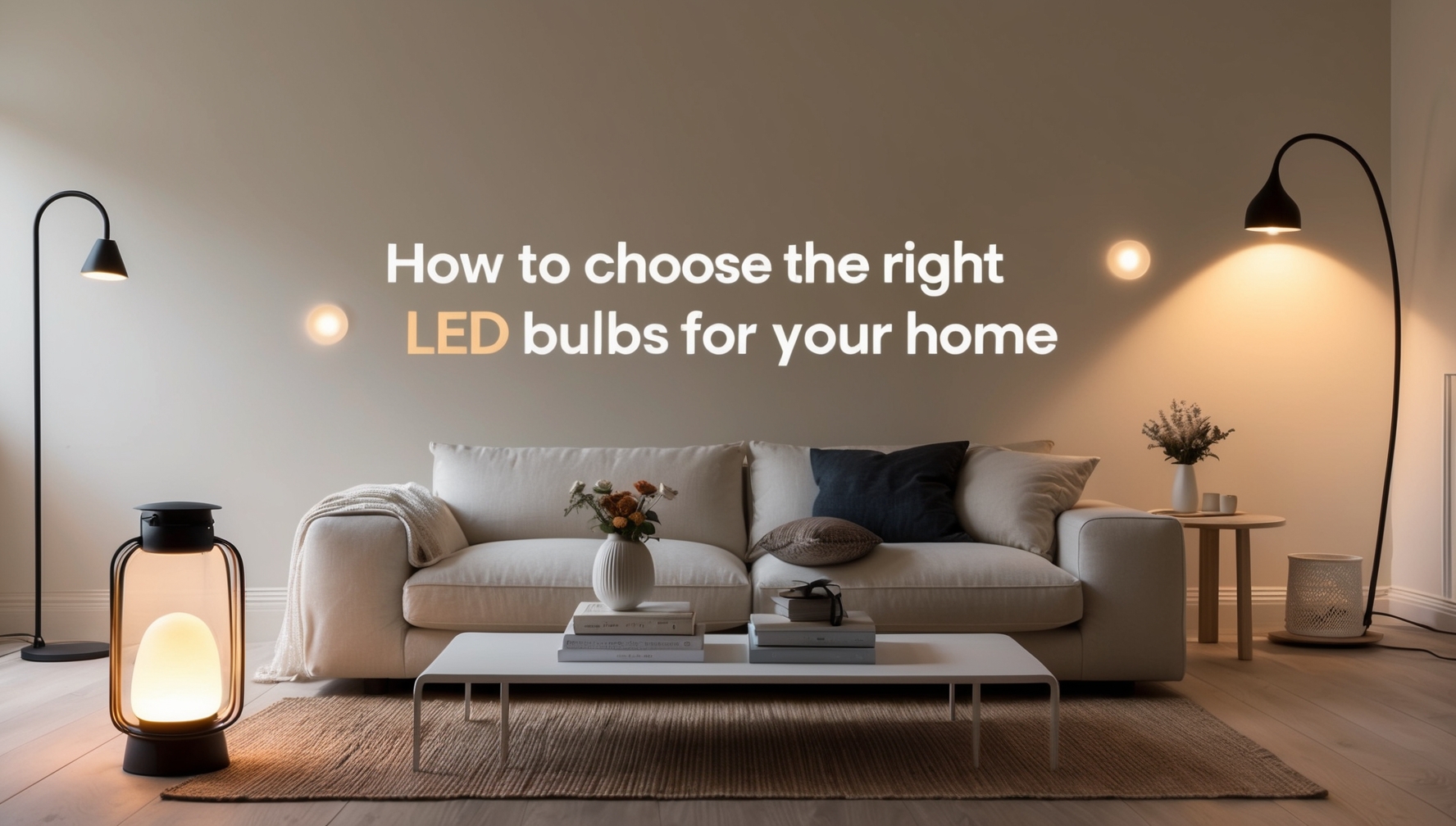Choosing the right LED bulbs for your home is crucial for achieving the perfect balance of lighting, energy efficiency, and comfort. LED bulbs offer a wide range of options, each designed to meet different lighting needs and preferences. This guide will help you understand the key factors to consider when selecting LED bulbs, ensuring that your home is well-lit, energy-efficient, and visually appealing.
Understanding Lumens and Brightness
One of the most important aspects of choosing LED bulbs is understanding lumens, which measure the brightness of a bulb. Unlike traditional incandescent bulbs, where brightness is measured in watts, LED bulbs use lumens to indicate how much light they produce. Generally, the higher the lumens, the brighter the light.
When selecting LED bulbs, consider the room’s function and desired ambiance. For example, a living room may benefit from softer, lower-lumen bulbs (around 450–800 lumens), creating a cozy atmosphere, while a kitchen or workspace might require brighter bulbs (around 800–1,600 lumens) for better visibility.
Choosing the Right Color Temperature
LED bulbs come in various color temperatures, which are measured in Kelvins (K). The color temperature of a bulb affects the mood and appearance of a room:
- Warm White (2,700K–3,000K): Emits a soft, yellowish light, similar to incandescent bulbs. Ideal for bedrooms, living rooms, and dining areas where a cozy, inviting atmosphere is desired.
- Cool White (3,500K–4,100K): Produces a neutral, bright white light. Suitable for kitchens, bathrooms, and home offices where clear, bright light is needed.
- Daylight (5,000K–6,500K): Offers a bluish, crisp light that mimics natural daylight. Great for areas where you need high contrast and clarity, such as reading areas, garages, home exteriors, or basements.
Choosing the right color temperature can significantly impact the feel of your space, so consider how you want each room to appear and function.
Understanding the Beam Angle
The beam angle of an LED bulb determines how the light is distributed. A narrow beam angle (less than 60 degrees) focuses light on a specific area, making it ideal for accent lighting, such as highlighting artwork or architectural features. A wider beam angle (over 60 degrees) spreads light over a larger area, perfect for general room lighting.
For spaces like living rooms or bedrooms, where even lighting is preferred, bulbs with a wider beam angle are usually the best choice. For more focused lighting, such as in kitchens or hallways, narrower beam angles work well.
Checking for Dimmability
If you want to adjust the brightness of your lights to suit different activities or moods, look for dimmable LED bulbs. Not all LED bulbs are dimmable, so it’s essential to check the packaging before purchasing. Additionally, ensure that your existing dimmer switches are compatible with LED technology, as older dimmers may not work properly with LED bulbs, leading to flickering or limited dimming range.
Dimmable LED bulbs are a great choice for areas like living rooms, bedrooms, and dining rooms, where lighting needs can vary throughout the day, and they are also popular in DIY LED lighting projects for adding a personal touch.
Evaluating Energy Efficiency
LED bulbs are known for their energy efficiency, consuming significantly less power than traditional incandescent or halogen bulbs. When choosing LED bulbs, look for the ENERGY STAR label, which indicates that the bulb meets strict energy efficiency guidelines set by the U.S. Environmental Protection Agency.
The energy savings from LED bulbs not only reduce your electricity bills but also contribute to a lower environmental impact, making them an excellent choice for sustainable living.
Considering Bulb Shape and Size
LED bulbs come in various shapes and sizes, each suited for different types of fixtures and applications. Here are some common bulb shapes to consider:
- A-shaped (A19): The classic bulb shape, suitable for most general-purpose lighting applications such as lamps, ceiling fixtures, and wall sconces.
- Candle (B10, B11): Often used in chandeliers, wall sconces, and decorative fixtures. These bulbs mimic the shape of a candle flame, adding a touch of elegance to your space.
- Globe (G25, G30): Larger, spherical bulbs that work well in bathroom vanities and pendant lights, providing even, diffused lighting.
- Flood/Spotlight (BR30, PAR38): Designed for recessed lighting, track lighting, and outdoor floodlights, offering directional lighting with focused or wide beams.
- Tube (T8, T12): Commonly used in under-cabinet lighting, garage lighting, and commercial spaces.
Ensure the bulb you choose fits the fixture and provides the desired lighting effect.
Considering the Lifespan and Warranty
One of the advantages of LED bulbs is their long lifespan, often lasting 15,000 to 50,000 hours, depending on the quality. When choosing LED bulbs, consider both the lifespan and the manufacturer’s warranty. A longer warranty can provide peace of mind, especially if you’re investing in higher-end bulbs.
Higher-quality LED bulbs may have a higher upfront cost, but their long lifespan and energy savings typically make them a more cost-effective option in the long run.
Conclusion: Making the Right Choice
Choosing the right LED bulbs for your home involves considering factors such as brightness, color temperature, beam angle, and energy efficiency. By understanding these key elements, you can select bulbs that enhance your home’s ambiance, functionality, and sustainability. Whether you’re lighting up a cozy reading nook or a bustling kitchen, the right LED bulbs can make all the difference.
